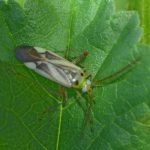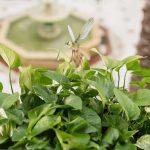For a gardener, there is nothing more heart-wrecking than seeing your once colorful plant lose its stellar look, which can cause by different types of leaf diseases.
Your first point of call to save your plant would be a quick remedy, such as relocating it to a sunnier spot or watering it.
When no excellent results occur, you blame yourself! But in the actual sense, your plant may have a disease–which naturally isn’t your fault.
The first point of contact of these diseases is mainly the leaves. Others may occur in different parts of a pant-like the fruits or stems. However, the most prevailing are leaf diseases.
Today's article will help you identify the different leaf disease types your plant may be susceptible to. So that when next you see a strange discoloration on your leaves, you can identify it like a pro.
Table of Contents
What Is Leaf Disease In Plant?
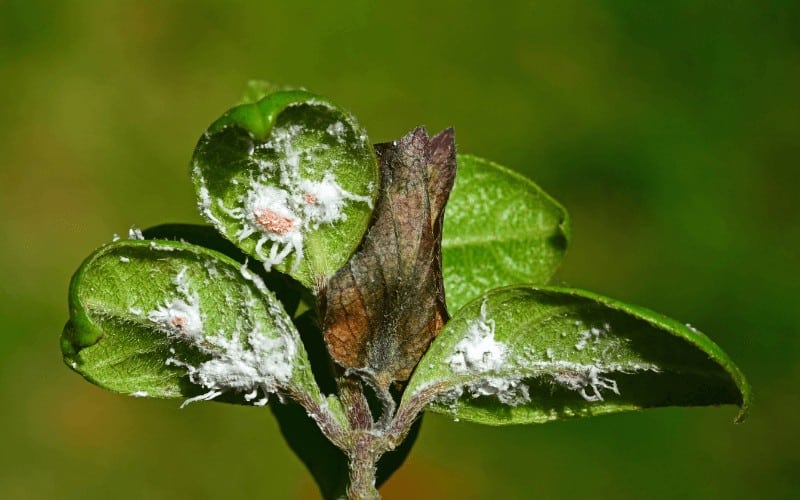
All species of living things are subject to diseases, and it does not exclude plants. The term disease refers to an unusual deterioration of a plant’s function or structure of its healthy state.
In most cases, experts largely classify plant diseases, according to the character of their principal causal agent, which could be infectious or noninfectious.
Pathogenic organisms such as:
- Fungus
- Bacterium
- Virus
- Nematode
- Mycoplasma viroid
Are the most common causative agents responsible for a bunch of damage primarily on plants and are characterized by wilting, rusts, moldy coatings, rotted, blotches, and discolored leaves.
On the other hand, diseases caused by noninfectious plant diseases otherwise known as “abiotic” in less optimal conditions include:
- Air pollution
- Extreme temperatures
- An imbalance between oxygen and soil moisture
- The toxicity of the soil
- Nutritional excess or deficiencies in essential minerals
- Etc.
Although susceptibleness is subjected to the unique causative agent, in nature, plant leaves may be impaired by over one disease-causing agent at once with symptoms ranging in severity starting with mild leaf damage which extends to fruit damage and then death.
Because of these similarities in symptoms, the differences aren’t set in stone which could be confusing to identify – especially for new gardeners.
In the next section, you will learn about the different types of plant diseases, and their diagnosis, so you can have a sound understanding of these diseases and efficiently tackle them.
Let’s begin!
Types of Leaf Diseases
Below are some of the most common types of leaf diseases you will often see in your plants if you don't take good care of them:
1. Leaf Spots

Leaf spots, also known as leaf blotch, anthracnose, shot hole, and scab, are typically obvious spots, characterized by alternating shapes, sizes, and shadings.
This spot whose causative agents are fungi or bacteria is mostly encircled consistently by a yellow halo - an unmistakable edge, that’s effortlessly noticeable.
Supposing a fungus brought this spot about, there is almost consistently fungus development of some sort in the spot, especially in a humid climate.
This fungus development might be tiny pimple-like designs, usually dark, or a mildew development of spores.
To identify leaf spots, it is important to use a magnifying instrument such as a hand lens or microscope to see these constructions.
On the off chance that the spots are various or near one another, diseased zones may come together to form unpredictable regions called “blotches.”
The general names of leaf spot diseases might be generic. For example, bacterial leaf spot; illustrative, for example, frog-eye leaf spot; or named after the fungus, for example, sectorial leaf spot.
2. Early Blight
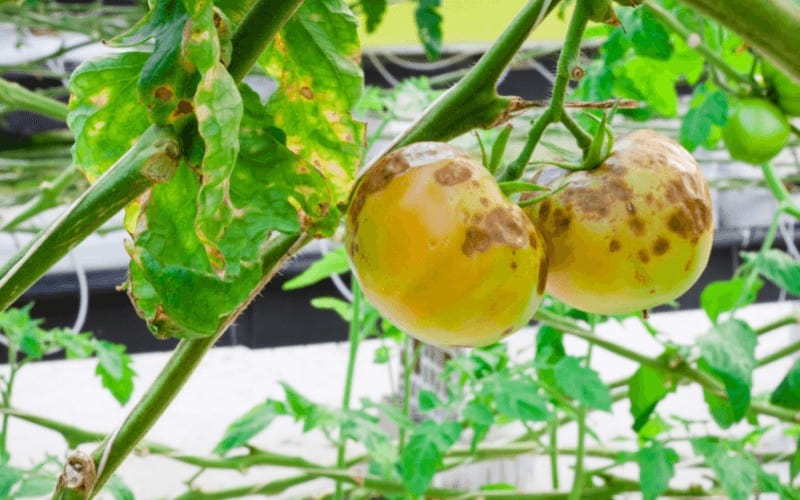
Often seen on potato and tomato plants throughout the United States, early blight is brought about by the “Fungus Alternaria Solani.”
Initially, symptoms show up on the under, older leaves as little earthy colored spots with centered rings that shape into a “bull’s eye” design.
As the fungus develops, it expands outward on the leaf exterior, making it shrink, become yellow, until it dies. In the end, the fruits, stem, and plant will get contaminated.
Sprinkling rain, irrigation, bugs, and garden tools mostly spread early blight. They likewise carry the disease in potato tubers and on tomato seeds. Despite its name, early blight happens any time throughout the planting season.
Factors that promote its rapid spread are High temperatures (80-85˚F.) and humid conditions. Also, in some cases, ineffectively nourished plants are attacked.
3. Fusarium Wilt
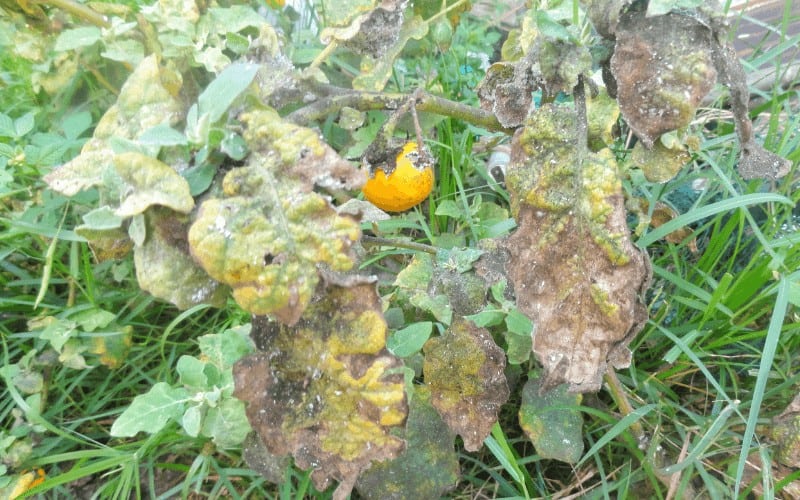
Fusarium wilt is a ground-borne pathogen commonly found all through the United States. It invades tomato, potato, pepper plants and, eggplant.
The causative fungus (Fusarium oxysporum) gains entry through the roots and meddles with the water directing vessels of the plant. As the disease extends up into the leaves, it limits the water stream, making the leave shrink and become yellow.
The disease symptoms frequently show up later in the developing season and are first seen on the lower (more established) leaves.
As the infection advances, the more youthful leaves will likewise be infected and the plant dies. A rule of thumb says, just one branch or side of the plant show indications.
Fusarium wilt can be existence for quite a long time underground and is transmitted by water, creepy crawlies, and garden tools.
The disease develops during a tropical climate and is most damaging when soil temperatures reach 80˚F. The dry climate and low soil dampness support this plant infection.
4. Rusts
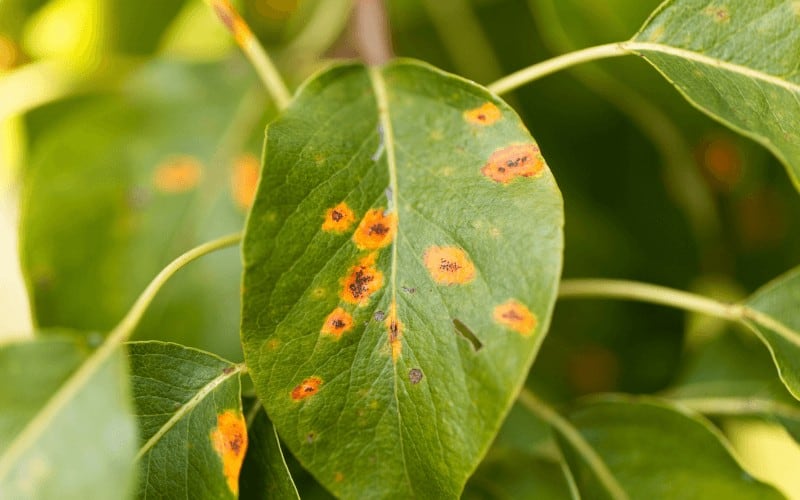
Rusts regularly produce spots like leaf spots, however, the spots are classified as “pustules." Rust pustules are radiant yellow, reddish-brown, orange-red, colored, or dark in shading.
Generally, the pustules are seen over the surface of the leaf and, when scoured with a piece of white fabric, a colored spot with similar color as the pustule can ordinarily be seen in the material.
In serious cases, the leaf wilts and dies quickly. A few kinds of rust likewise happen on stems. Rusts are normal on grains and grasses.
5. Powdery Mildew
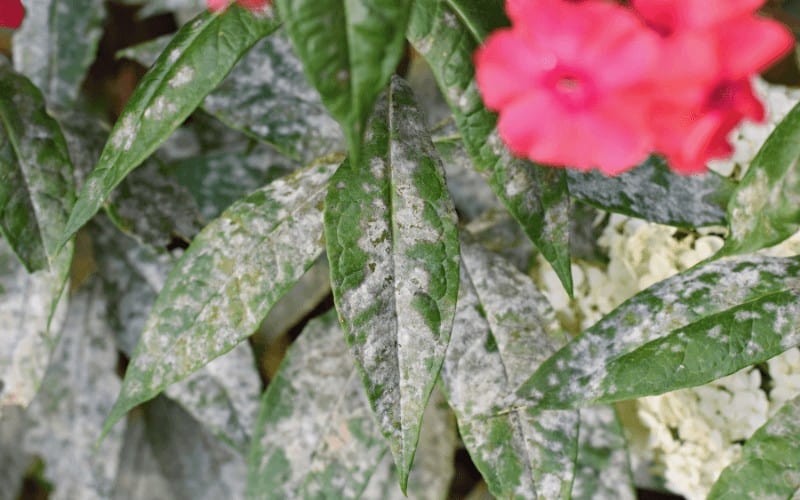
Powdery mildew is a shallow white to light grayish, powdery to coarse growth on leaves, but May also occur on stems and blossoms.
Infected leaves eventually become yellow, wither, and die quickly. The disease is common in cucurbit-type vegetables and grains.
6. Downy Mildew
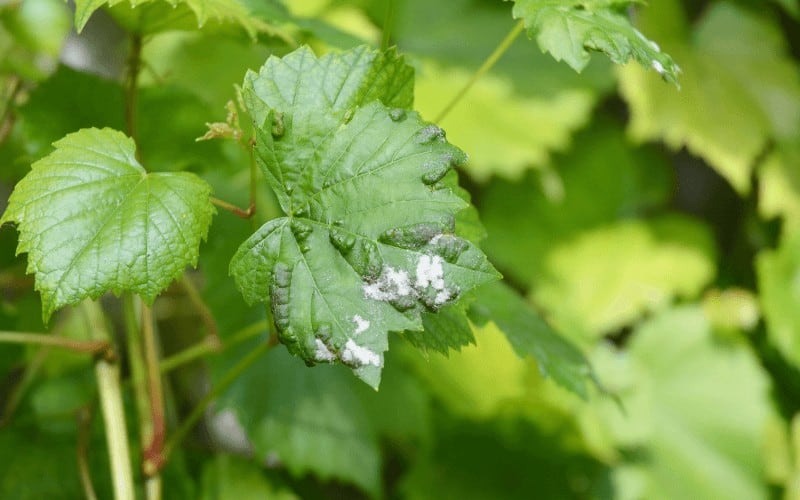
Downy mildew symptoms are light yellow-green to yellow zones on the leaf exterior; light dim to purplish mildew growth on the under of the leaf.
The blue form of tobacco is a downy mildew disease. Distorted plant growth may result from downy mildew as seen in grain sorghum.
Conclusion
The fungal or fungal-like organism is the most common causative agent for most plant diseases, as these plants provide them the energy they need to live and thrive.
Most of these parasites are microscopic (very minute and can be seen only with the aid of a microscope).
If a disease is suspected, detective work to identify the particular cause is necessary to know the type of organism involved.
For example, a close look at powdery mildew on a lilac leaf, you will see the causative fungal itself (Microsphaera alni).
There are several other types of leaf diseases other than those written in this article. However, these are the most encountered ones by gardeners.
You May Also Like:
- Does Vinegar Kill Powdery Mildew?
- Will Baking Soda Kill Powdery Mildew?
- How To Kill White Fungus On Palm Trees
- How To Get Rid Of Spider Mites On Hibiscus
- Does Diatomaceous Earth Kill Fungus?

